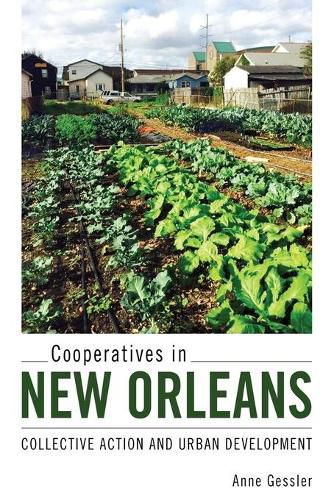Readings Newsletter
Become a Readings Member to make your shopping experience even easier.
Sign in or sign up for free!
You’re not far away from qualifying for FREE standard shipping within Australia
You’ve qualified for FREE standard shipping within Australia
The cart is loading…






This title is printed to order. This book may have been self-published. If so, we cannot guarantee the quality of the content. In the main most books will have gone through the editing process however some may not. We therefore suggest that you be aware of this before ordering this book. If in doubt check either the author or publisher’s details as we are unable to accept any returns unless they are faulty. Please contact us if you have any questions.
Cooperatives have been central to the development of New Orleans. Anne Gessler asserts that local cooperatives have reshaped its built environment by changing where people interact and with whom, helping them collapse social hierarchies and envision new political systems. Gessler tracks many neighborhood cooperatives, spanning from the 1890s to the present, whose alliances with union, consumer, and social justice activists animated successive generations of regional networks and stimulated urban growth in New Orleans.
Studying alternative forms of social organization within the city’s multiple integrated spaces, women, people of color, and laborers blended neighborhood-based African, Caribbean, and European communal activism with international cooperative principles to democratize exploitative systems of consumption, production, and exchange. From utopian socialist workers’ unions and Rochdale grocery stores to black liberationist theater collectives and community gardens, these cooperative entities integrated marginalized residents into democratic governance while equally distributing profits among members.
Besides economic development, neighborhood cooperatives participated in heady debates over urban land use, applying egalitarian cooperative principles to modernize New Orleans’s crumbling infrastructure, monopolistic food distribution systems, and spotty welfare programs. As Gessler indicates, cooperative activists deployed street-level subsistence tactics to mobilize continual waves of ordinary people seizing control over mainstream economic and political institutions.
$9.00 standard shipping within Australia
FREE standard shipping within Australia for orders over $100.00
Express & International shipping calculated at checkout
This title is printed to order. This book may have been self-published. If so, we cannot guarantee the quality of the content. In the main most books will have gone through the editing process however some may not. We therefore suggest that you be aware of this before ordering this book. If in doubt check either the author or publisher’s details as we are unable to accept any returns unless they are faulty. Please contact us if you have any questions.
Cooperatives have been central to the development of New Orleans. Anne Gessler asserts that local cooperatives have reshaped its built environment by changing where people interact and with whom, helping them collapse social hierarchies and envision new political systems. Gessler tracks many neighborhood cooperatives, spanning from the 1890s to the present, whose alliances with union, consumer, and social justice activists animated successive generations of regional networks and stimulated urban growth in New Orleans.
Studying alternative forms of social organization within the city’s multiple integrated spaces, women, people of color, and laborers blended neighborhood-based African, Caribbean, and European communal activism with international cooperative principles to democratize exploitative systems of consumption, production, and exchange. From utopian socialist workers’ unions and Rochdale grocery stores to black liberationist theater collectives and community gardens, these cooperative entities integrated marginalized residents into democratic governance while equally distributing profits among members.
Besides economic development, neighborhood cooperatives participated in heady debates over urban land use, applying egalitarian cooperative principles to modernize New Orleans’s crumbling infrastructure, monopolistic food distribution systems, and spotty welfare programs. As Gessler indicates, cooperative activists deployed street-level subsistence tactics to mobilize continual waves of ordinary people seizing control over mainstream economic and political institutions.